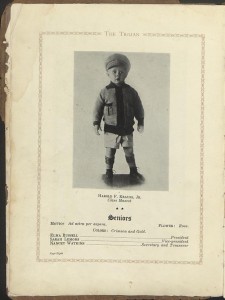
Harold F. Krauss, Jr., Mascot of the Troy High School Senior Class, 1927
While we typically associate a school mascot with a large, costumed character or animal, young children also served as mascots in many North Carolina High Schools and Colleges. Several examples can be found in the digitized yearbooks from the Wayne County Public Library which are now available at DigitalNC.org. This Flickr set shows other young mascots in yearbooks from across North Carolina.
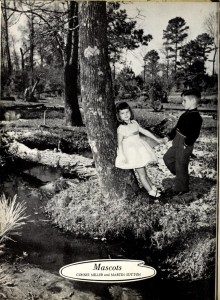
Mascots Connie Miller and Martin Sutton
Other than a name and an adorable picture, none of the yearbooks give much information about the children, how they were chosen, or what duties came with being a mascot. Officially, a mascot is any person, item, or animal thought to bring luck so hopefully these young children brought good fortune to their schools.
 Visitors to the North Carolina Yearbooks collection today will find a new and improved design. The new look makes it easy to pick the school you’re looking for from a list or by typing the name, and includes recent highlights from yearbooks on the North Carolina Digital Heritage Center’s Flickr collections. The biggest change is that there are now links at the top of the page to two important sections of the site: College and University Yearbooks and the recently-launched High School Yearbooks (more about this soon). Enjoy, and let us know what you think.
Visitors to the North Carolina Yearbooks collection today will find a new and improved design. The new look makes it easy to pick the school you’re looking for from a list or by typing the name, and includes recent highlights from yearbooks on the North Carolina Digital Heritage Center’s Flickr collections. The biggest change is that there are now links at the top of the page to two important sections of the site: College and University Yearbooks and the recently-launched High School Yearbooks (more about this soon). Enjoy, and let us know what you think.
The North Carolina Digital Heritage Center is excited to announce the most recent editions of The Indianhead Yearbooks from The University of North Carolina at Pembroke are now available on our website. This is a small batch of only two yearbooks, but there is a special edition.
Typically, yearbooks cover a single academic year but UNC Pembroke published a single yearbook with material from 2021-2022. This yearbook comes in the wake of COVID-19 and gives insight into what the lives were like for members of the UNC Pembroke community. Take some time and flip through the pages, there are some real gems in this yearbook.
To learn more about The University of North Carolina at Pembroke, please visit their website linked here.
To view more materials from The North Carolina at Pembroke, please visit their contributor page linked here.
To explore more yearbooks from across the state, please visit our North Carolina Yearbook Collection linked here.
DigitalNC is happy to announce 35 yearbooks from our new partner, the North Carolina School for the Deaf. All of these yearbooks are from said school and cover years between 1915-1971.
The North Carolina School for the Deaf was founded in 1891 in Morganton, NC, located in the western part of the state. In a move to separate hearing impaired students from vision impaired students, whom all had a place under one school in Raleigh that went by the demeaning name of the North Carolina Institution for the Deaf and Dumb and the Blind, funds were established for the school at Morganton. The first brick laid for the school (with a name close to it’s sister school; the North Carolina School for the Deaf and Dumb) was by two future pupils, Maggie LeGrand and Robert C. Miller, on May 16, 1892. Doors were opened to 100 pupils on October 2, 1894. In 1907, the name officially changed to The North Carolina School for the Deaf (Class Book, images 17-18).
Funds from the state’s building program and a W.P.A. grant in the early 1940s allowed the school to construct cold storage, fencing, barns, a poultry house, playgrounds, an athletic field, as well as renovate school buildings to be properly fireproofed and ventilated (The Deaf Carolinian, image 22). Fast-forward to 1965, and the school has a large campus, with buildings both original and new.
To learn more about the history of the North Carolina School for the Deaf, please visit their website. To view more yearbooks from across North Carolina, visit the North Carolina Yearbooks page.
References:
North Carolina School for the Deaf. Class Book, Class of 1934 North Carolina School for the Deaf. https://lib.digitalnc.org/record/237179?ln=en#?c=0&m=0&s=0&cv=17&r=0&xywh=77%2C118%2C2410%2C1464
North Carolina School for the Deaf. The Deaf Carolinian. https://lib.digitalnc.org/record/237183#?c=0&m=0&s=0&cv=21&r=0&xywh=455%2C2058%2C2900%2C1762
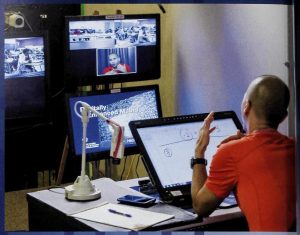
Why use 1 monitor when you can use 4! — Image from the 2016 yearbook.
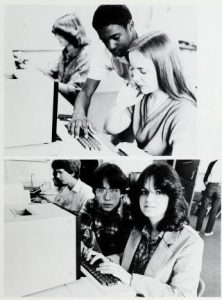
Students in the 1981 yearbook working with personal computers.
34 editions of Odyssey by North Carolina School of Science and Mathematics, are now online. These yearbooks span the years 1981-2016, and document the lives of high school students at the school. North Carolina School of Science and Mathematics (NCSSM) is a two-year public residential high school that serves juniors and seniors from across the state. Located in Durham, North Carolina, the NCSSM curriculum focuses heavily on science, math, and technology.
The focus on technology can be seen throughout the yearbook collection, with plenty of photographs of students exploring the newest technology of the day in traditional academic and independent project settings. While many images in the 1981 yearbook focus on students working with early personal computers, images from the 2016 yearbook show students engaged with virtual reality and robotics equipment. As students live at the school full-time, there are also many photos of student life including photos of students in front of their dorms and various performances and events.
To browse all of the NCSSM yearbooks, click here. To learn more about NCSSM, visit their partner page, or take a look at their website.
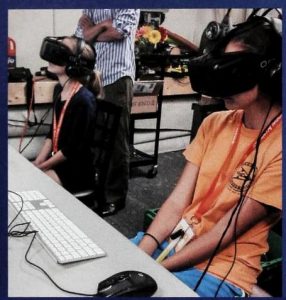
Students with virtual reality equipment in the 2016 yearbook
![De Hi Sco [1947], page 74](https://www.digitalnc.org/wp-content/uploads/2017/01/DeHiSco_1947p74.png)
De Hi Sco [1947], page 74
The yearbooks are like many hosted on DigitalNC, documenting the lives and activities of students during the early 1950’s. They reflect many of the fashion and cultural patterns of the period for students in the white community.
![The Viking [1952], page 44](https://www.digitalnc.org/wp-content/uploads/2017/01/Viking_1952p44.png)
The Viking [1952], page 44
In addition, this batch also contains several campus publications from Carver College (later Mecklenburg College), the predominantly Black community college in the area. The catalogues detail the many program offerings and degree types that were available for students.
Carver College has a unique story. This community college and its white counterpart, Charlotte College, were the center pivot of the segregation debate for the Charlotte Mecklenburg School System during the early 1960’s. The debate centered on whether Charlotte needed both community colleges or if the city could be served by just one, integrated community college. These catalogs demonstrate the level of education at stake for those in the Black community in Charlotte, prior to the community college debate. You can see more primary sources about the community college debate in Charlotte by following this link to another post on the DigitalNC Blog.
Newly Digitized Campus Publications:
![Carver College Annual Catalogue [1959-1960], page 2](https://www.digitalnc.org/wp-content/uploads/2017/01/Screen-Shot-2017-01-10-at-7.24.02-AM.png)
Carver College Annual Catalogue [1959-1960], page 2
![Mecklenburg College Annual Catalogue [1962-1963], page 2](https://www.digitalnc.org/wp-content/uploads/2017/01/Screen-Shot-2017-01-10-at-7.23.38-AM.png)
Mecklenburg College Annual Catalogue [1962-1963], page 2
All of these documents help to paint a picture of segregation, desegregation, and the complexities involved with each for a complicated debate in mid-century North Carolina. These primary sources could be excellent resources for teachers creating lesson plans about this period, seeking tangible documents from local communities.
To learn more about Charlotte Mecklenburg Library, please visit their contributor page or their homepage. To see more yearbooks and campus publications that tell the stories of communities in times of transition, check out the North Carolina Yearbooks Collection and limit your search by year.
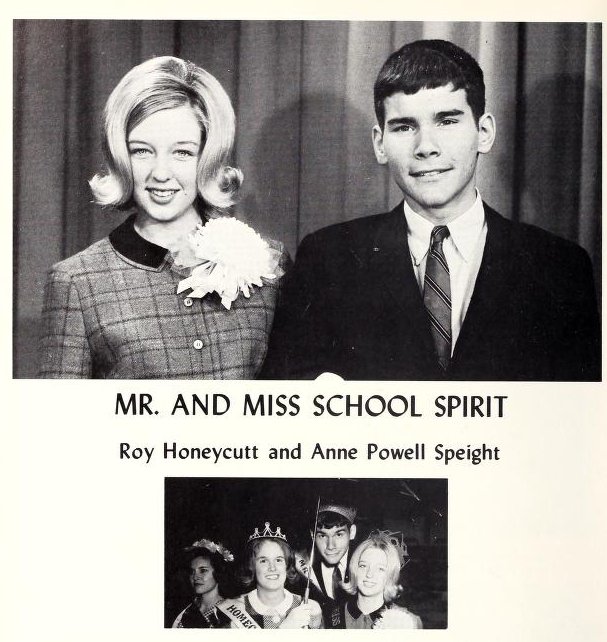
Mr. and Miss School Spirit, 1965, Junius H. Rose High School
We just finished working with East Carolina University to digitize over 60 high school yearbooks from the eastern part of the state. While predominantly from Pitt County, there are also yearbooks from Beaufort, Craven, Edgecombe, Franklin, Lenoir, and Wilson Counties, as well as the first yearbooks we have on the site from Greene, Halifax, and Washington counties. Below is a list of the schools represented, and the years added.
- Ayden-Grifton High School – 1949, 1953, 1954, 1956, 1959, 1963, 1965
- Belvoir-Falkland High School (Belvoir, N.C.) – 1957, 1959, 1960, 1963
- Bethel High School – 1921
- Craven County Farm Life School (Vanceboro, N.C.) – 1942, 1953
- Farmville High School – 1962-1965
- Fountain High School – 1942
- Greene Central High School (Snow Hill, N.C.) – 1962, 1964, 1965
- Greenville High School – 1919, 1920, 1922, 1923, 1925, 1937, 1938, 1942-1947, 1950-1957
- Grimesland High School – 1952
- Junius H. Rose High School (Greenville, N.C.) – 1958-1965
- Grainger High School (Kinston, N.C.) – 1924
- Louisburg High School – 1965
- Plymouth High School – 1957
- Roanoke Rapids High School – 1949
- Saratoga High School – 1958, 1959
- Southwood School (Kinston, N.C.) – 1956, 1957, 1961, 1963
- Tarboro High School – 1937, 1938
- Washington High School – 1944
- William Robert Mills High School (Louisburg, N.C.) – 1952, 1958
These are the first high school yearbooks contributed from East Carolina University. You can view more yearbooks, by school, on our North Carolina Yearbooks page.
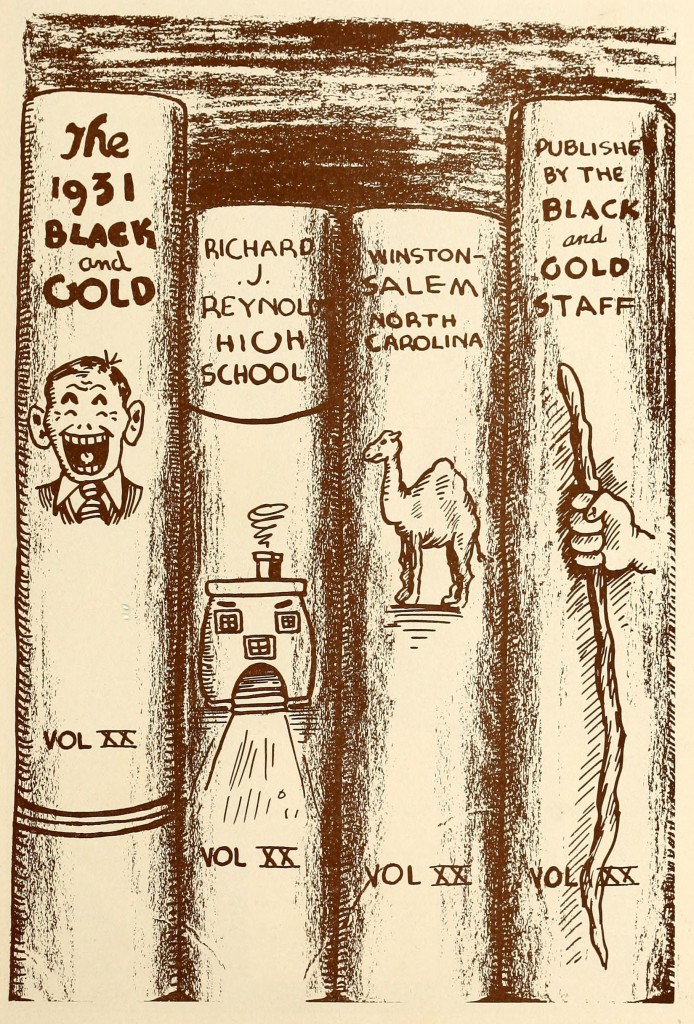
Several yearbooks from the North Carolina Collection at UNC-Chapel Hill are now on DigitalNC. The yearbooks include: Richard J. Reynolds High School and its predecessors Winston City High School and Winston-Salem City High School, 1910-1931; Gastonia High School, 1922; Fayetteville High School, 1923; Chapel Hill High School, 1925-1964, New Bern High School, 1927; Perquimans County High School, 1927; and 1964-1968 yearbooks from J.W. Ligon High School, a former Black high school that is now Ligon Middle School in Raleigh, N.C.
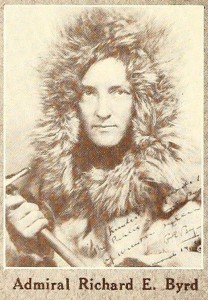 The 1931 issue of The Black and Gold from RJ Reynolds High School warrants a special mention. That year’s staff had very ambitious illustrators, as every student’s photo is accompanied by a humorous caricature that offers a hint (albeit a slightly insulting one) at the student’s personality. Clubs and societies receive similar treatment. The yearbook also reveals that the school received a visit that year from Rear Admiral Richard E. Byrd, a polar explorer and aviator, thanks to the school’s Fine Arts Foundation. View Admiral Byrd’s letter to the school and the many fine caricatures here.
The 1931 issue of The Black and Gold from RJ Reynolds High School warrants a special mention. That year’s staff had very ambitious illustrators, as every student’s photo is accompanied by a humorous caricature that offers a hint (albeit a slightly insulting one) at the student’s personality. Clubs and societies receive similar treatment. The yearbook also reveals that the school received a visit that year from Rear Admiral Richard E. Byrd, a polar explorer and aviator, thanks to the school’s Fine Arts Foundation. View Admiral Byrd’s letter to the school and the many fine caricatures here.
Big news for alumni of public universities in North Carolina: student yearbooks from all 15 University of North Carolina system universities are now freely available online. Yearbooks for 14 of the schools have been digitized by the North Carolina Digital Heritage Center and are available in the North Carolina Yearbooks collection on DigitalNC, while yearbooks from North Carolina State University are available through the excellent Historical State digital collection.
These yearbooks are terrific resources for students and alumni, as well as anyone interested in the evolution of higher education and student life in 20th-century North Carolina. There are a total of 774 volumes available from these schools, ranging in date from 1890 (
The Hellenian, at UNC-Chapel Hill) to the present.
Pick your alma mater or hometown school from the links below and start browsing:
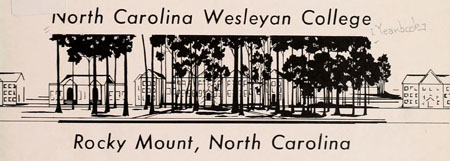
Student yearbooks from North Carolina Wesleyan College are now available on DigitalNC. Forty-three volumes of The Dissenter, from 1962 to 2006, are now accessible through the North Carolina College and University Yearbooks collection.



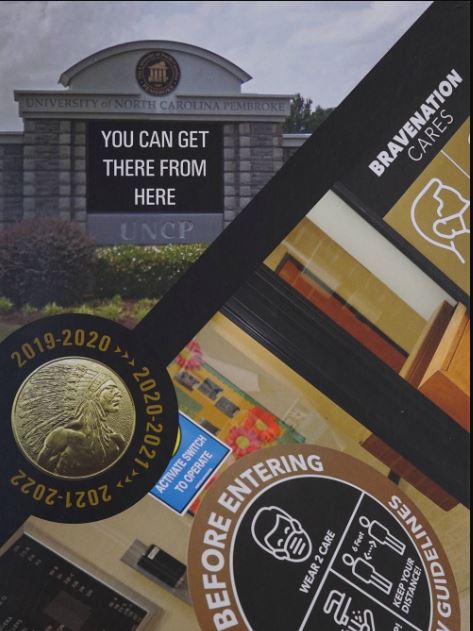
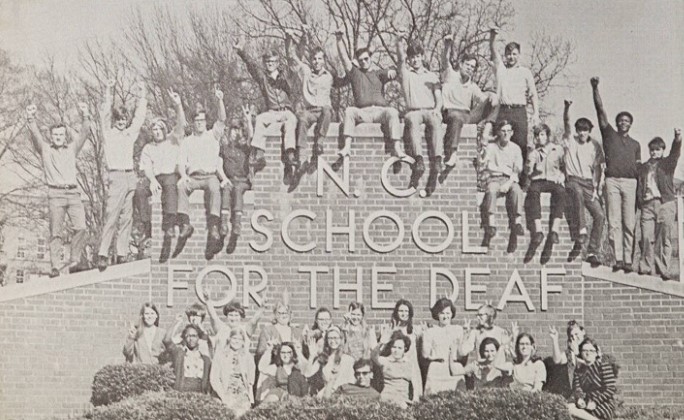
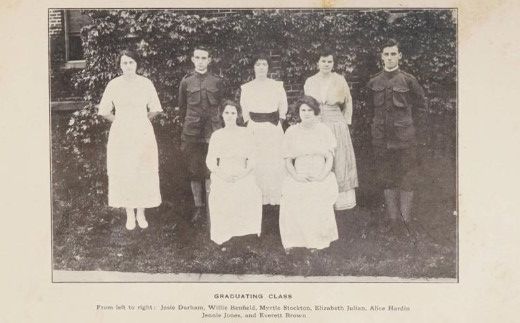
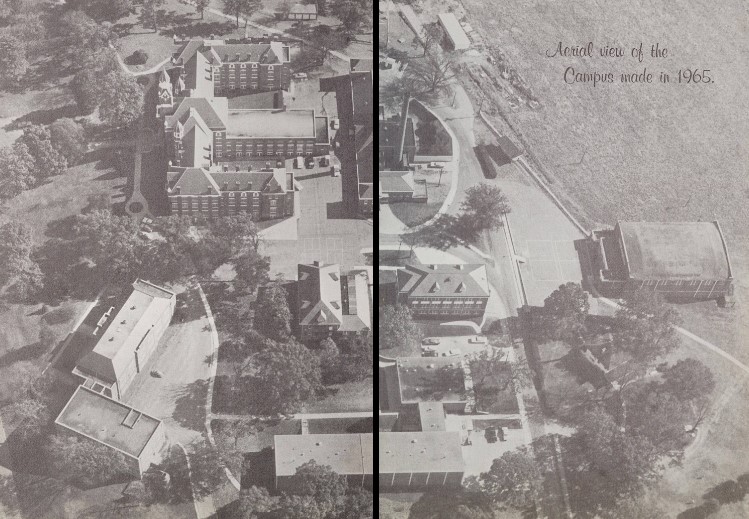



![De Hi Sco [1947], page 74](https://www.digitalnc.org/wp-content/uploads/2017/01/DeHiSco_1947p74.png)
![The Viking [1952], page 44](https://www.digitalnc.org/wp-content/uploads/2017/01/Viking_1952p44.png)
![Carver College Annual Catalogue [1959-1960], page 2](https://www.digitalnc.org/wp-content/uploads/2017/01/Screen-Shot-2017-01-10-at-7.24.02-AM.png)
![Mecklenburg College Annual Catalogue [1962-1963], page 2](https://www.digitalnc.org/wp-content/uploads/2017/01/Screen-Shot-2017-01-10-at-7.23.38-AM.png)





